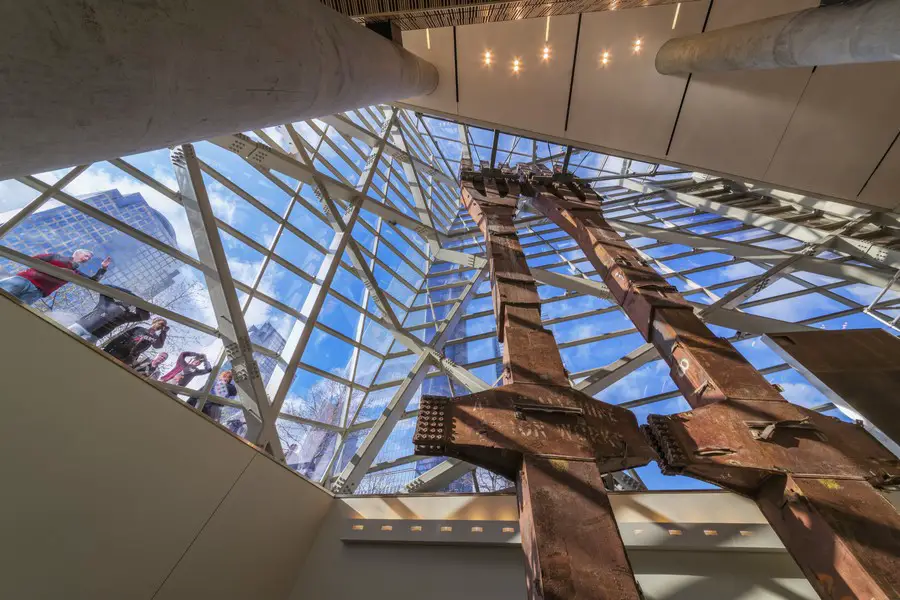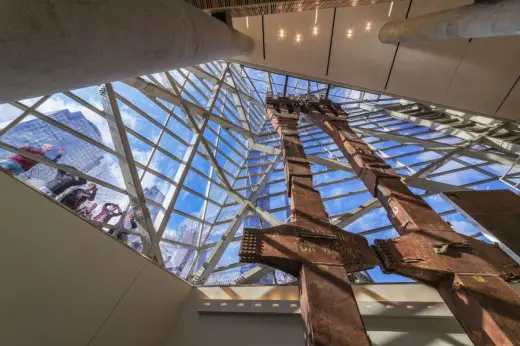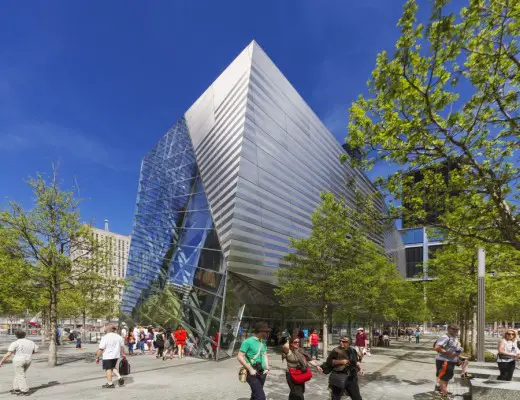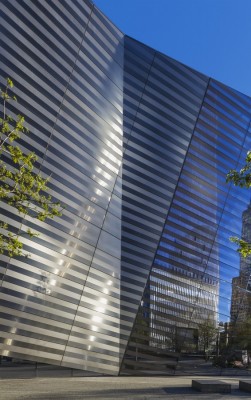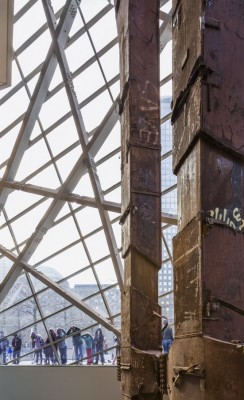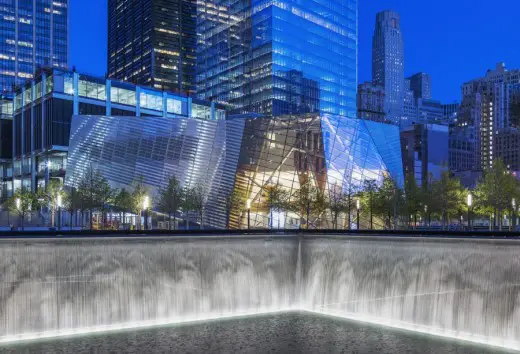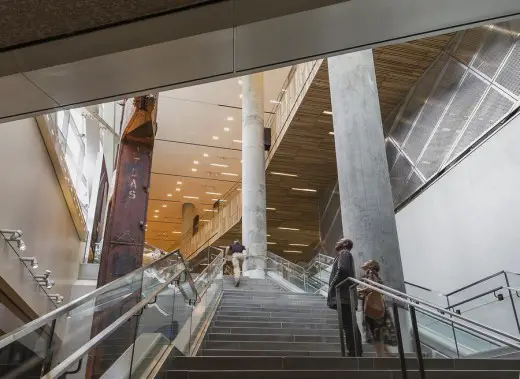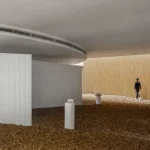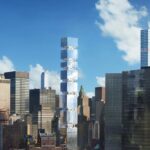September 11 Memorial Museum Pavilion, New York Building Project News, Design Images
National September 11 Memorial Museum Pavilion
Urban Development at Ground Zero, Manhattan, USA design by Snøhetta: Architecture
May 14, 2014
Opening of National September 11 Memorial Museum Pavilion
Design: Snøhetta
On May 15, 2014, President Obama will be present for the dedication of the National September 11 Memorial Museum & Pavilion at the World Trade Center site. The Pavilion and Museum will open to the public for the first time on May 21, 2014.
In 2004, SNØHETTA was commissioned to design the only building on the memorial plaza. In the years since, the program has changed several times, however it has remained a cultural facility dedicated to visitor comfort and orientation. The design for the building embodies a careful reaction to the horizontal character of the memorial plaza’s design, while also providing the area with a lively organic form that allows the visitor to imagine the site and city in a broader sense.
According to Snøhetta’s Founding Partner, Craig Dykers, “Our desire is to allow visitors to find a place that is a naturally occurring threshold between the everyday life of the city and the uniquely spiritual quality of the Memorial. It is important that people physically engage with the building and feel that it helps lead them on to other areas of the site and other thoughts about their experiences there.”
Snøhetta’s design approach has always been characterized by an exploration of context. The WTC Memorial site carries with it both the power of its history and a new hope for the future. It is a place that conveys the memories and dreams of people around the world who are affected by its presence without forgetting its intimate connection to the people of New York.
Certain characteristics of the Museum Pavilion will seem reminiscent of the original towers, while at other times these
notions are only alluded to. The alternating reflective treatment of the façade will mirror the changing seasons, revealing the Pavilion’s differing qualities throughout the year. Inclined, reflective and transparent surfaces encourage people to walk up close, touch and gaze into the building.
Once inside, visitors look out through the Pavilion’s atrium to see others peer in, and begin a physical and mental transition in the journey from above to below ground. Within the atrium, stand two structural columns rescued from the original towers.
Although removed from their former location and function, they mark the site with their own profound and aesthetic gesture. The Pavilion’s light and airy materials allow daylight into the Museum below grade, commemorating the Pavilion’s tenuous relationship with the ground, equal parts weightless and hopeful.
Complementing the power and simplicity of the pools and the trees, Snøhetta has designed a visually-accessible, unimposing, building which is fully integrated into the Memorial site. With its low, horizontal form and its uplifting geometry the Pavilion acts as a bridge between two worlds – between the Memorial and the Museum, the above and below ground, the light and dark, between collective and individual experiences. It also bridges over separate structures: the Path station, Museum and subway station below. Between vertical and horizontal extremes, it is a stepping stone between skyscrapers and the plaza.
The Pavilion’s jewel-like, striped façade was developed in collaboration with the Client to allow the building to have a strong resonance for the visitor as well as providing visual and architectural connection to the surrounding urban environment. The flat plane of the Memorial Plaza is pierced by the glass Atrium of the Pavilion, which allows visitors to enter the below-grade Museum and bring with them sunlight from above.
The name of the Memorial Plaza is “Reflecting Absence.” As visitors cross the Plaza and approach the perimeter of the pools their gaze drops to watch the water cascading into the main pools, then flowing further over the second rim into the inner void.
It is a physical reflection of the monumental absence created by the tragic events of September 11. By contrast, Snøhetta’s Pavilion reflects presence: the present moment, the day, the time, the weather, the trees, the surrounding buildings, and especially all the visitors present at the Memorial. While they look down into the Memorial fountains to contemplate and pay respect to the past, they look straight ahead and up at the Pavilion to reflect on the present and the future, bravely and with hope.
Photography: Jeff Goldberg
Feb 18, 2010
National September 11 Memorial Museum Pavilion Design
Architect: Snøhetta
International Freedom Centre + Drawing Centre : WTC Cultural Center
Aerial View of Memorial Quadrant
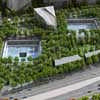
picture : Squared Design Lab
Since the tragic events of September 11, 2001, New York State and the City of New York have worked to rebuild the site and return it to a lively and important center in one of the world’s most notable cities.
Snøhetta was commissioned to design the only building that actually sits on the memorial grounds and is slated to contain cultural activities. The idea of placing a cultural building on the actual memorial site is rare and it has been expected to garner considerable scrutiny.
Aerial View of pavilion building + Site Section + street view
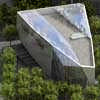
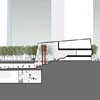
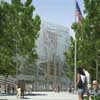
images : Snøhetta
During the four years of working with the project, the program has changed several times, however it has remained a cultural facility that is dedicated to visitor comfort and orientation. The current design, which has now completed the contract document stage, is scheduled for completion in 2011.
The design for the building embodies a careful reaction to the horizontal character of the memorial design while also providing the area with a lively organic form that allows the visitor to imagine the site and city in a broader sense. The building will provide each visitor with the opportunity to engage in the act of remembering and to ponder the consequences of forgetting.
Certain characteristics of the Museum Pavilion will seem reminiscent of the original towers, while at other times these notions are only alluded to. The alternating reflective treatment of the façade will mirror the changing seasons, revealing the Pavilion’s differing qualities throughout the year. Inside, a large atrium space has been designed to direct light deep into a subterranean museum, designed by a separate architect.
Within the atrium there will stand two structural columns rescued from the original towers. Although removed from their former location and function, they mark the site with their own profound aesthetic gesture.
Snøhetta exhibition – 4 Feb – 3 Apr 2010 @ Scandinavia House, Manhattan
National September 11 Memorial Museum Pavilion at street level + close up
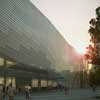
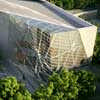
pictures : Squared Design Lab
National September 11 Memorial Museum Pavilion – Building Information
Typology: New Cultural Museum Pavilion
Scope: Architecture, Landscape Architecture, Interior
Planning: Full Contract
Size 49,000 sqft
Cost: $86 million
Client: National September 11 Memorial & Museum at the World Trade Center
Phase: Contract Documents Complete
Completion: 2011
Night view ; Tridents
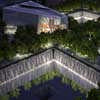
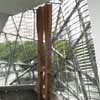
pictures : Squared Design Lab
Snøhetta Architects became well known with their Alexandria library in Egypt which won a major architecture competition. Snohetta have an architects office in New York based at 50 Broad St
National September 11 Memorial Museum Pavilion images / information from Snøhetta Architects
September 11 Memorial Museum Pavilion design : Snohetta
Location: Liberty St, New York City, USA
New York City Architecture
Contemporary New York Buildings
NYC Architecture Designs – chronological list
New York City Architectural Tours by e-architect
Key Building design by Snøhetta
New York State Architecture Designs
200 Greenwich Street, WTC Tower 2
Design: Foster + Partners
200 Greenwich Street Buildings
99 Church Street Tower, Lower Manhattan
Design: Robert A. M. Stern Architects
World Trade Centre Tower Design
56 Leonard Street
Design: Herzog & de Meuron
56 Leonard Street
Comments / photos for the September 11 Memorial Museum Pavilion New York Architecture page welcome
Website: www.911memorial.org/museum

